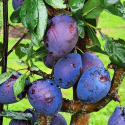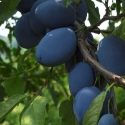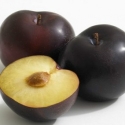Prune



READ MORE
READ LESS
PAGE 1 ALL aka European Prune Plum Prune Plum with dark purple-blue skin and yellow flesh that is very sweet and juicy. Can be eaten fresh or used for preserving or drying. A very hardy cultivar that is a prolific producer. Deciduous. Prune Plum Cheviot MB Expected Stock Height: 150/160 cm ? New stock expected Beginning of July, 2026. Waitlist now. Estimated price TBA. Payment on order.
aka European Prune Plum The world's most popular heritage prune plum. Dark purple skin with light amber flesh that turns red when cooked. Freestone with fine textured, richly flavoured sweet flesh. Excellent for eating fresh, drying or bottling. Vigorous, cold hardy tree. Ripe around March. Self fertile. Deciduous. Prune Plum Italian MB Current Stock Height: 130/150 cm ? Container: pb18 ? $66.99 aka European Prune Plum 'Stanley' is a European plum that when dried becomes a prune. The large dark purple-blue fruit ripen around February/March and have greenish-yellow grainy flesh. The fruit is sweet and juicy. Reliable heavy crops on a self fertile tree so no need for a partner. Happiest in the sun. Prune Plum Stanley MB Expected Stock Height: 130/160 cm ? New stock expected Beginning of July, 2026. Waitlist now. Estimated price TBA. Payment on order.

Pollination Chart
Habit: Upright
Leaves: Deciduous, Green
Mature Size 7-10 yrs (HxW): 5m x 3m
Pollination Chart
Habit: Upright
Leaves: Deciduous, Green
Mature Size 7-10 yrs (HxW): 5m x 3m
Plum Information Page
Habit: Upright
Leaves: Deciduous, Green
Mature Size 7-10 yrs (HxW): 4m x 3m
HL Nurseries Limited t/a Wairere Nursery
826 Gordonton Road, R D 1, Hamilton 3281 Ph: (07) 824 3430 Email: